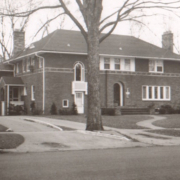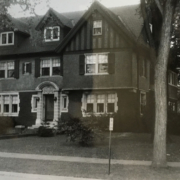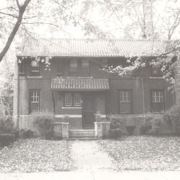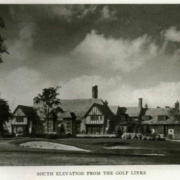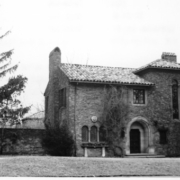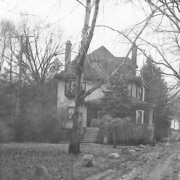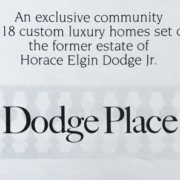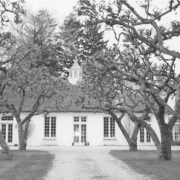Historical Architecture of Grosse Pointe – 938 Balfour
Last week we turned our attention to some of the less well-known homes created by William B. Stratton. Aside from the large-scale projects that are often featured in books and publications, Stratton also completed numerous residences that are just as charming but don’t always receive the exposure they deserve.
This week we arrive at 938 Balfour to explore the home designed and built by Leonard Willeke in 1922, as a speculative house. The definition of a speculative house is – ‘a residence built without a particular buyer in mind or under contract but designed to appeal to the maximum market possible’. Willeke, during the 1920’s, created at least seven residences on Balfour, this included four speculative homes: 938 (in 1922), 785 (in 1923), 746 (in 1925), and 777 (in 1928).
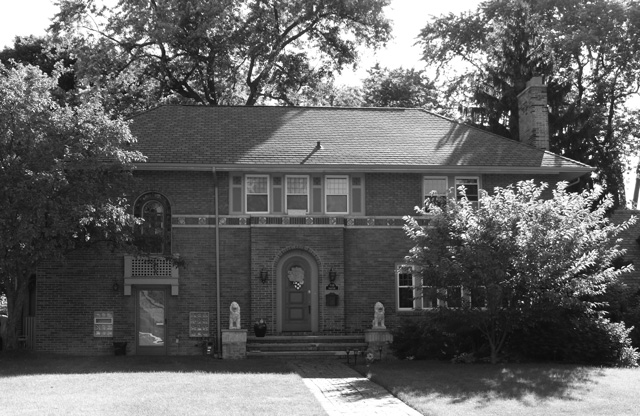
Willieke was particularly active in Grosse Pointe Park during the 1920’s, a community he and his wife resided in for over fifty years. Leonard B. Willeke was one of the most adaptable and prolific architects to work in the community. He was an extremely versatile designer, and one might say, an unrecognized champion in his contribution in providing Grosse Pointe with some exceptional homes.
938 Balfour is a 3,850 sq ft French Colonial inspired residence. Constructed of brick the exterior features a striking and distinctive decorative band of iridescent Pewabic tiles along the front and side elevations. Pewabic tiles were also used heavily throughout the interior. The property includes a 15’ x 24’ living room, 14’ x 17’ sq ft dining room, ornate fireplaces, leaded glass windows along with four bedrooms and two additional bedrooms for maids. The house was sold in 1923, for $52,000 (around $812,000 today). It was purchased by Colonel Jesse G. Vincent, American aircraft, marine, automobile engine designer, and chief engineer for Packard Motor Car Company. The first image below is courtesy of the National Automotive History Collection of the Detroit Public Library (1925).
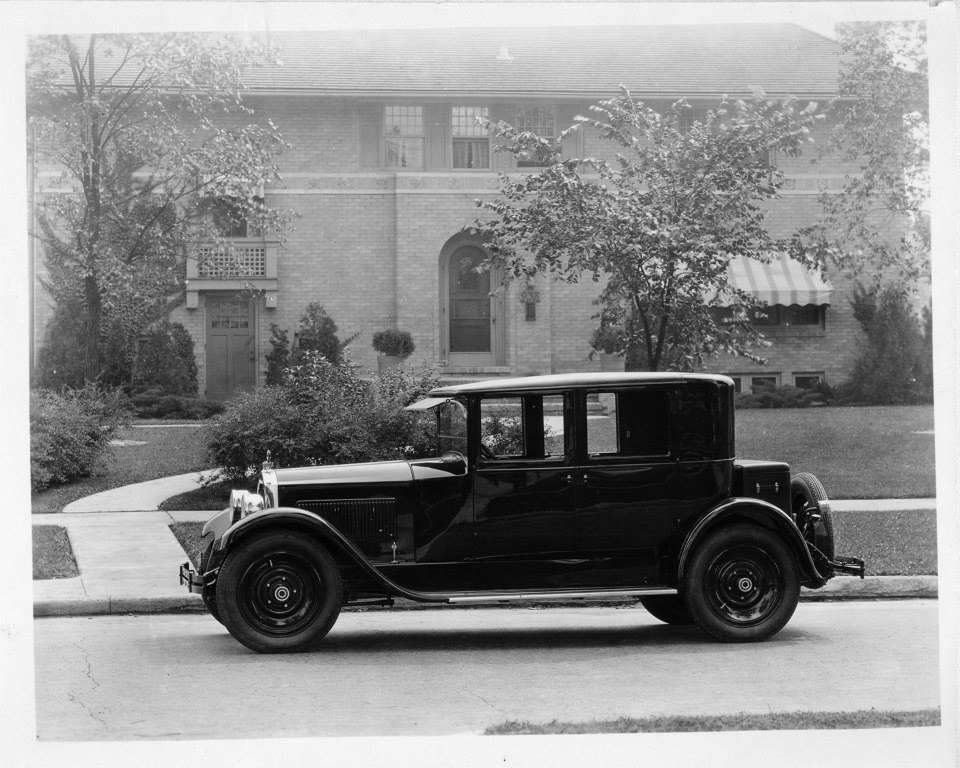
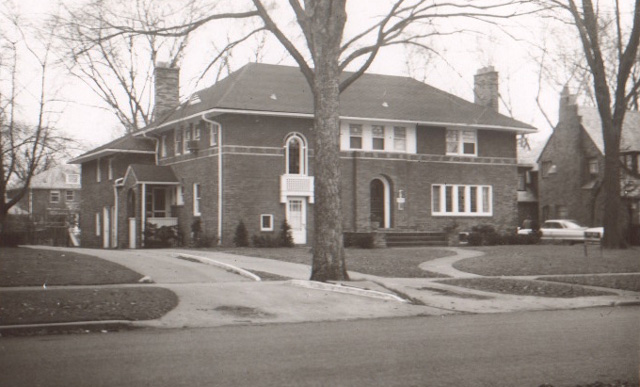
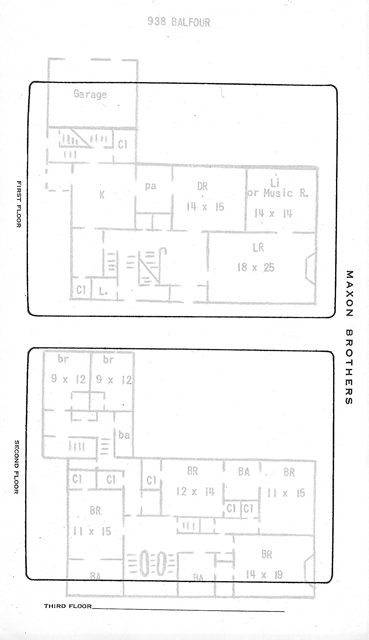
In 1927, Colonel Vincent sold 938 Balfour and moved to his new home, 15500 Windmill Pointe (you can read the full story by clicking here). 938 Balfour was purchased by Mrs. Homer Johnson. Mrs. Johnson’s husband was the vice president, secretary, and general manager of the Penberthy Injector Company. It appears Mrs. Johnson rented out the property for several years. In 1937, she moved back into the house where she would reside until around 1962.
The original owner of the home, Colonel Jesse G. Vincent, was a prominent figure in Grosse Pointe. Born in 1880, in Charleston, Arkansas, he was ‘famed initially for his design of the World War I Liberty V-12 aircraft engine’. ‘Vincent studied engineering in his spare time from a course offered by International Correspondence Schools. During the early part of his career Vincent established himself with “a thick portfolio of patents” while at the Burroughs Adding Machine Company in Detroit before moving on to become acting chief engineer for the Hudson Motor Car Company late in 1910’. Source: Wikipedia. He joined Packard in 1912. Vincent ultimately became Packard’s head of engineering, he retired in 1946 – immortalized as “America’s Master Motor Builder”.
The architect behind 938 Balfour, Leonard Willeke, was born in Cincinnati in 1889. He began his architectural career at the age of 17 as an apprentice with a local firm. In 1905, Willeke moved to New York to work for the prestigious firm of Trowbridge and Livingston. His talent was quickly acknowledged – in 1906, he was asked to relocate to San Francisco to work on a new contract that had just been awarded to the firm – a new hotel – completed in late 1907. Willeke stayed on the west coast and joined the California State Engineers office to design earthquake resistant buildings. In 1908, Willeke moved to Paris to continue his education at the famed Paris École des Beaux-Arts. During his two-years in France he traveled extensively through Europe, North Africa and England, making sketches and collecting ideas that he would use throughout his career. After moving back to the United States, Willeke returned Cincinnati to work for a firm specializing in fine residential design. This position was followed by a stint as chief architect for a firm specializing in large commercial buildings and expensive residential work in Ohio. Willeke then moved to Detroit, in 1914, as an associate architect for the firm Elmore R. Dunlap.
In 1916, Willeke started his own firm, within the following 12 months he had projects with an array of prestigious clients – Henry and Edsel B. Ford, Oscar Webber, Charles E Sorensen and Ernest C. Kanzler to name but a few. During some of his early commissions Willeke not only designed the house but much of the interior (hardware, light fixtures, furniture etc.) and even designed the gardens at some of the homes. Willeke’s experiences in Europe and his ‘craftsman like understanding of materials’ led him to specialize in fine quality residential buildings, bringing him success in both custom and speculative ventures around Metro Detroit – including 938 Balfour.
*Photos courtesy of the Higbie Maxon Agney archives unless stated.
Written by Katie Doelle
Copyright © 2021 Katie Doelle

